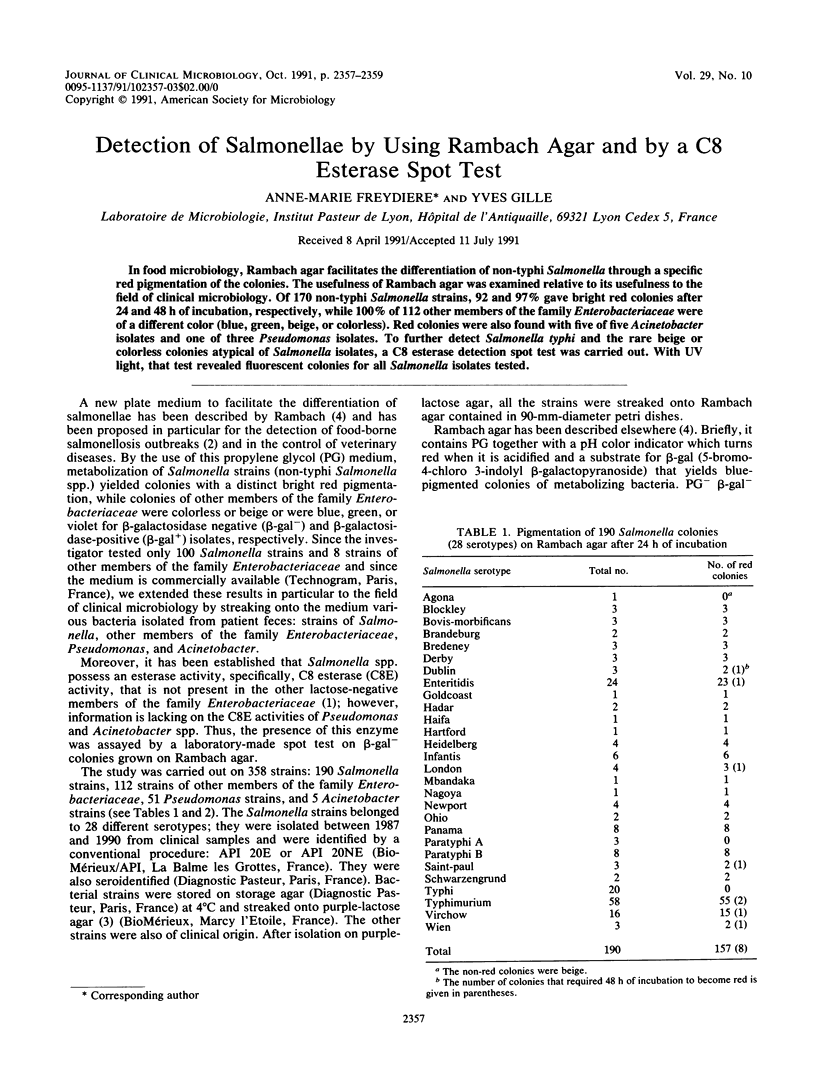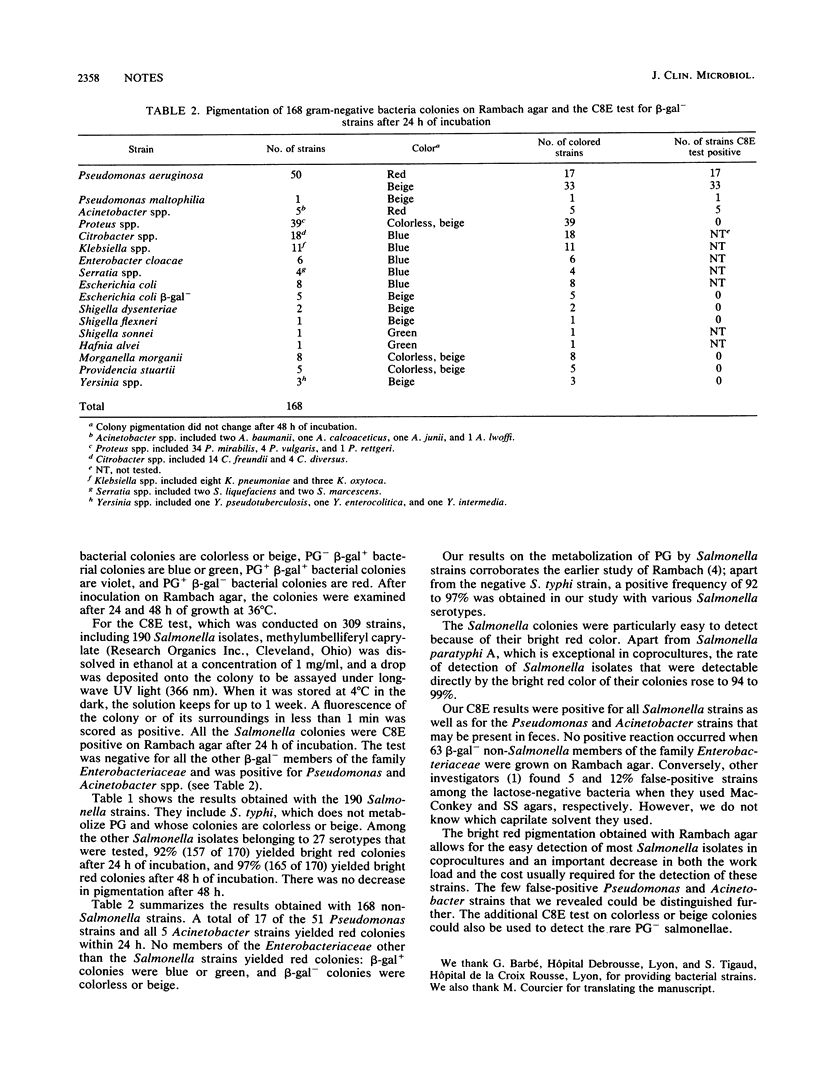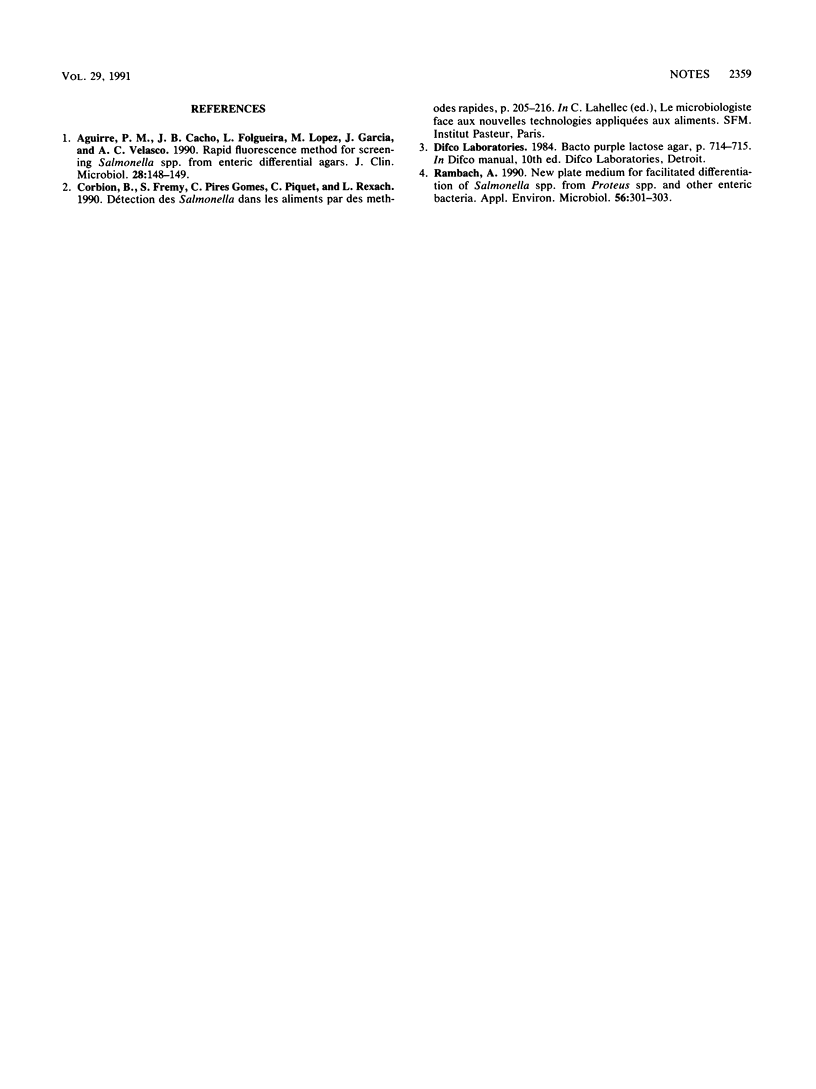Abstract
In food microbiology, Rambach agar facilitates the differentiation of non-typhi Salmonella through a specific red pigmentation of the colonies. The usefulness of Rambach agar was examined relative to its usefulness to the field of clinical microbiology. Of 170 non-typhi Salmonella strains, 92 and 97% gave bright red colonies after 24 and 48 h of incubation, respectively, while 100% of 112 other members of the family Enterobacteriaceae were of a different color (blue, green, beige, or colorless). Red colonies were also found with five of five Acinetobacter isolates and one of three Pseudomonas isolates. To further detect Salmonella typhi and the rare beige or colorless colonies atypical of Salmonella isolates, a C8 esterase detection spot test was carried out. With UV light, that test revealed fluorescent colonies for all Salmonella isolates tested.
Full text
PDF


Selected References
These references are in PubMed. This may not be the complete list of references from this article.
- Aguirre P. M., Cacho J. B., Folgueira L., López M., García J., Velasco A. C. Rapid fluorescence method for screening Salmonella spp. from enteric differential agars. J Clin Microbiol. 1990 Jan;28(1):148–149. doi: 10.1128/jcm.28.1.148-149.1990. [DOI] [PMC free article] [PubMed] [Google Scholar]
- Rambach A. New plate medium for facilitated differentiation of Salmonella spp. from Proteus spp. and other enteric bacteria. Appl Environ Microbiol. 1990 Jan;56(1):301–303. doi: 10.1128/aem.56.1.301-303.1990. [DOI] [PMC free article] [PubMed] [Google Scholar]


